There’s no doubt that twelve-gauge AOWs command attention at the range, in the shop, or out in the field. They have an awesome look about them, they’re a ton of fun to shoot a variety of loads through, are great for breaching, and they make for a solid home defense option (with Laserlyte Center Mass?).
When Mark Serbu brought the SERBU Super-Shorty to market back in 1996 (Yeah, that was ’96. Feel old now?) it caught everyone’s attention. Of course, consumers weren’t’ the only ones taking notice. Several manufacturers with wise attorneys who knew how to navigate federal (and local) law got to work designing similar firearms.
In 2012, Hurricane Butterfly Research Corp located south of Seattle became one such manufacturer. They set out to create a line of larger-capacity box magazine-fed short pump-action shotguns that took 2-3/4″ shells and, quite frankly, delivered more fun at a competitive price.
Five years later at SHOT 2017, the Typhoon 12 AOW and short barreled shotgun (SBS) debuted. Jeremy S. published a short article with video here.
The Typhoon 12 is based on a Hawk Industries Remington 870 Chinese clone created in the 1980’s-1990’s. Hawke had proven their design to be reliable in the standard configuration and Hurricane Butterfly worked with them to develop a box magazine-fed variant that would prove to work just as well.
With the design final and BATFE approval in-hand, Hurricane Butterfly began to import the Typhoon 12’s components. With all but one of the firearm’s parts made by Hawk, the guns pass QA in Qiqihar and are then shipped to Hurricane Butterfly as parts kits where they are then assembled in Tukwila, Washington.
The Typhoon 12 wasn’t built to directly compete with the likes of Black Aces Tactical’s ultra-tacti-cool $1300-$1600 pump shotties or SERBU’s Super-Shorty with limited 2+1 capacity. Although, Hurricane Butterfly did have a little fun with Mark Serbu (above), given Serbu’s initial design was a clear influence on the Typhoon 12.
Now, as you’ve seen, the Typhoon 12 is available in FDE Cerakote, which looks great and adds a smooth finish. But that’s as fancy as you’ll see a Typhoon 12 from the factory.
I should also note that the FDE-Cerakoted variants were a small-batch production and availability is limited. I believe the only store that has a supply of FDE Typhoon 12’s is Pantel Tactical in Renton, Washington.
Typhoon 12’s are field-striped with ease and familiarity for those who’ve handled a Remington Model 870. Cleaning and maintenance is simple and speedy.
Getting a closer look at the features of the Typhoon 12 AOW, the steel receiver is simply stamped, “Hurricane Butterfly Typhoon 12”. Again, nothing fancy here, we’re going for function.
The Typhoon 12’s controls are only a slight departure from what you’d see on a Remington 870. Notably, the action bar lock button has been extended, widened, and nicely curved, making it nearly impossible to miss.
The magazine release latch sits in a logical location; low of the magazine well and behind an inserted magazine.
The Typhoon 12’s unique magazine well accepts proprietary five-round box magazines with side-view witness holes; no cross-compatibility with any other patterns yet.
All variants come with one standard polymer box magazine to match the firearm (black or FDE). Extra polymer magazines will run you about $30. Solid-quality steel magazines (above, left) are also available for about $50.
Preference aside, both options are great quality, highly durable magazines that share the same follower. And larger-capacity drum magazines are currently in the works at Hurricane Butterfly.
The AOW’s pistol grip is a one-piece molded design made by Hawk specifically for the Typhoon 12. It is very ergonomic, filling the hand quite well and allowing for comfortable control of the AOW. I found the small gap between the trigger guard and grip to be of no consequence.
The single pinky/ring finger groove gives the otherwise smooth-sided grip some texture and a square sling attachment point like you’d see on an M4A1 Type 1 adjustable buttstock sits atop the rear of the grip.
Another one of the Typhoon 12’s most eye-catching features is the Magpul RVG (Rail Vertical Grip), which is a great paring for the compact size of the gun and provides easy manipulation of the action with a short stroke.
The grip attaches to the forend tube assembly and action bar by way of a four-slot 1913 rail section. Attaching the RVG in this manor allows the end user much more flexibility if they wish to swap the grip for something else. However, if you do wish to change the grip, Hurricane Butterfly recommends only foregrip models that feature cross-bolts which index in the Picatinny rail slots.
The Typhoon 12’s standard configuration includes an 8.5-inch barrel with a cylinder choke (0.000″ constriction), which puts its overall length at 18 inches. The barrels are chambered for up to 2-3/4″ 12-gauge shot shells. Extra barrels area available for around $250.
A mean-looking (and sharp!) steel breaching muzzle brake is an awesome optional barrel configuration. Breaching muzzle brakes are available in 4-point, 6-point, and 12-point crowns.
To date, the 6-point breaching muzzle brake (above, left) has been the most popular, especially with LEOs. A breaching muzzle break will add about $100 to the cost of the Typhoon 12 and 3-inches to the length of the barrel (11.5″), and OAL (21″).
The Typhoon 12 measures seven inches tall from top rail to the bottom of an inserted magazine.
Typhoon 12s come with an eleven-slot Weaver rail mounted to the top of its receiver, making the addition of a red dot sight, shot pattern laser, or other optical sighting system quick and easy.
Quite frankly, this style of rail, with its low profile center channel, makes for an adequate sighting system on its own given the short, cylinder-choked barrel and large bore.
Another great feature of the Typhoon 12 is they are compatible with the vast majority of Remington 870 accessories, including folding stock adapters like the one on the short-barreled shotgun (SBS) above with MFT BATTLELINK Minimalist stock (shown folded).
And speaking of Typhoon 12 variants, Hurricane Butterfly offers several other configurations.
Aside from the AOW, the SBS may be the next most popular option.
However, as we’re all well-aware, some states have enacted regulations more far-reaching than Federal law. In Washington State, Hurricane Butterfly’s home, SBSs are illegal for the common individual to possess. However, a Typhoon 12 in the brace-equipped configuration above is considered a “Firearm” (not an AOW or SBS) and isn’t subject to the NFA or WA SBS laws, making it A-OK to own. Check your local laws.
A stabilizing brace configuration would also allow some folks who want an AOW configuration to retain the firearm while waiting for an approved Form 1. Of course, you would essentially pay $195 extra for this “convenience.”
Another awesome two-stamp configuration I got to check out was their Salvo 12 suppressed AOW. This set-up utilizes a custom 10.5″ threaded barrel to accompany the Salvo’s adapter choke mount adapter. Salvo 12 compatible barrels are available through Hurricane Butterfly.
And on the other end of the spectrum, Hurricane Butterfly is currently working on the release of their 18.5-inch magazine-fed “Long Typhoon,” due early next year.
A design very similar to Remington’s 870 DM, it was once imported and sold sans-box-magazine in the States as a Harrington & Richardson Pardner 12. The Long Typhoon’s box magazine-fed design is easier to use than the 870 DM, especially with Hurricane Butterfly’s all-steel magazines.
Even with such a wide selection of variants, Federal and local regulations should be fairly straight-forward. An AOW or SBS configuration will require an NFA Tax Stamp ($5 or $200), an AOW with a Salvo 12 will require one of each, and the Long Typhoon (once available) will require only a 4473 background check.
Being located in the general vicinity of Hurricane Butterfly’s HQ, I had the opportunity to join them for one of their shop range days.
On the firing line, we loaded up steel 5-round Typhoon 12 magazines with primarily 2-3/4″ 1-ounce #7-1/2 and #9 lead. Loading the mags was easy, however be aware that the rear magazine lips on new steel mags are somewhat sharp.
The loaded box magazines seated into the Typhoon 12’s mag well and locked into place with a solid snap. There was no wobble or chatter, just a good-fitting lock-up.
The AOW and SBS ate up the rounds one after another, endlessly hungry for more. The light target loads produced minimal recoil in the short shotguns, and there was a noticeable difference in how the braked and non-braked models handled. Both were very manageable, but I preferred the models with a breaching muzzle brake.
That breaching brake not only helps reduce muzzle rise, but those sharp points on its crown dig right into wood to line-up a well-placed breaching shot.
We didn’t have any framed doors to test the breacher on that day, but we did manage to split some slender wood posts.
Even though we had plenty of optics at our disposal, we didn’t mount any – there really wasn’t a need. The long center channel in the short-range blaster’s Weaver rail was more than enough of a sighting system to accurately direct a load of shot out the cylinder-choked muzzle and downrange, striking its intended target.
We also tried some mini-shell flash/bang loads, which need to be loaded into the chamber by hand. The also fired and ejected just fine and produced nearly zero recoil.
The two loads I wanted to try, but didn’t get the chance were 00 buckshot and slugs. I know, I know, I have failed you. Rest assured I will get back out again to fill the thirst and possibly bust-up my shoulder a bit.
After we’d worked through a couple of cases of shot shells, I was ready to write a check and take a Typhoon 12 home. But I was also spoiled by the SBS with breaching muzzle brake, which I can’t personally own in my home state. So my best option may just be the “firearm” version, which doesn’t require any NFA paperwork. Then again, there’s just something about that AOW that a braced version just can’t compete with.
Hurricane Butterfly’s Typhoon 12 AOW, with its 5-round box magazines and vertical foregrip pump action, is a ferociously-fun beast in a compact package. Optics-ready, but not optics-necessary, its ergonomic pistol grip makes this gun a prime point-and-shoot platform. The optional breaching brake noticeably reduces muzzle rise and increases controllability of the short shotty.
What’s more, since the Typhoon 12 is built from a Remington 870 clone, it’s compatible with a wide variety of Remington 870 accessories, allowing you to customize or reconfigure (via proper BATFE procedures) the gun to meet your specific wants/needs.
If you’re not into the AOW, the SBS and stabilizing brace configurations may just fit the bill for you. However, regardless of your preferred configuration, the Typhoon 12 is one heck of a fun firearm platform and well-worth a spot in your safe.
Specifications: Hurricane Butterfly Typhoon 12 AOW (12ga, 2-3/4″)
Gauge: 12 ga.
Capacity: 5-round Box Magazine (2 3/4″ shells)
Barrell Length: 8.5″ (11.5″ w/ Breaching Muzzle Brake)
Overall Length: 18″ (21″ w/ Breaching Muzzle Brake)
Trigger Pull: 5.5 lbs.
Overall Weight: 5 lbs.
Price as reviewed (AOW, Black): $595.00 MSRP
Ratings (out of five stars):
Quality: * * * *
Even though Hurricane Butterfly uses a Chinese company to manufacture the majority of the Typhoon 12’s parts, they must still meet a high bar before passing muster – and they do. There is a very good balance between quality of parts and cost.
Fit & Finish: * * * *
With a good-quality basic black finish and well-fit parts, the Typhoon 12 was built to be used and abused; it’s not a safe queen. The only area that has any wiggle is the forend tube assembly and action bar, which is to be expected.
Magazines: * * * * *
Both the steel and polymer 5-round magazines are of high-quality construction and interface with the Typhoon 12 without issue. Unfortunately, the magazines are proprietary, but they are also readily available from Hurricane Butterfly or Pantel Tactical.
Overall: * * * *
The Typhoon 12 AOW by Hurricane Butterfly isn’t the belle of the ball, she’s the one with the best dance moves giving everyone a show worth seeing. An easy firearm to use and maintain, its short length and point-and-shoot design make it an attractive option for home defense. With the optional breaching muzzle brake, the compact Typhoon 12 AOW will swiftly open doors and then drop out of your way. And the Typhoon 12’s compatibility with most aftermarket Remington 870 accessories means you can make your Typhoon 12 a one-of-a-kind AOW to suit your needs.


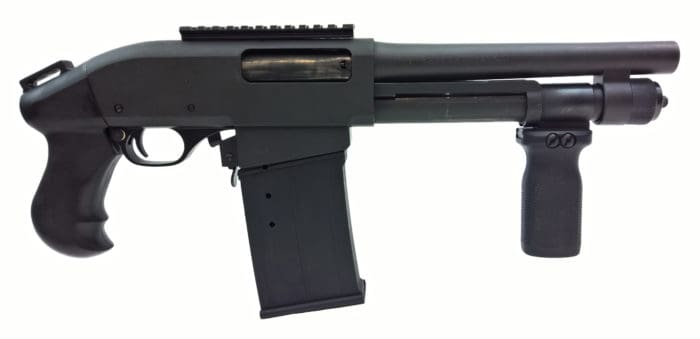
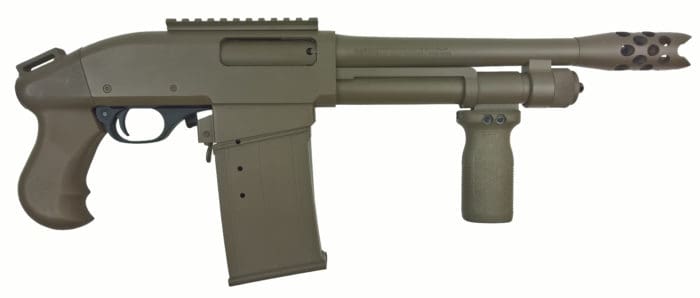

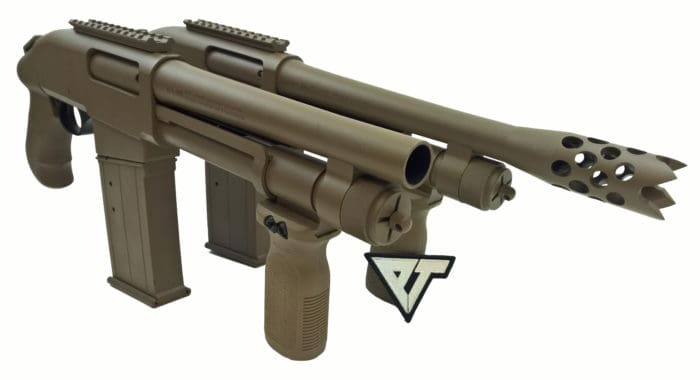
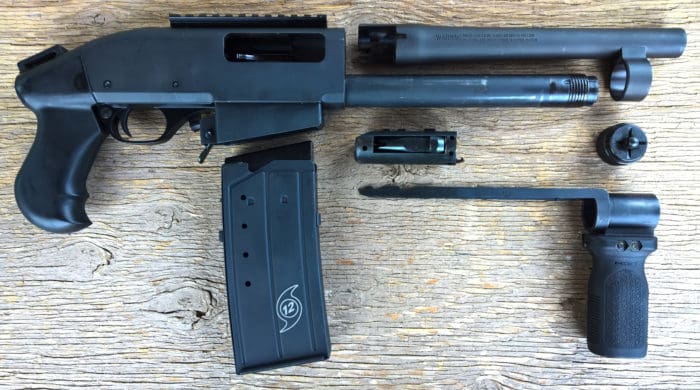
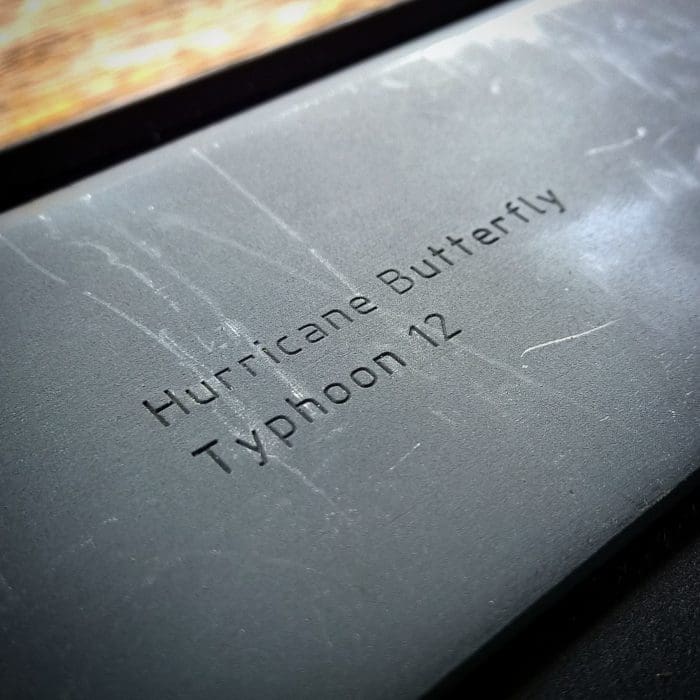
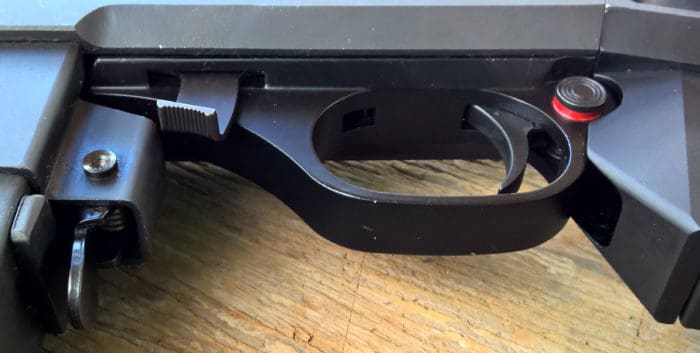
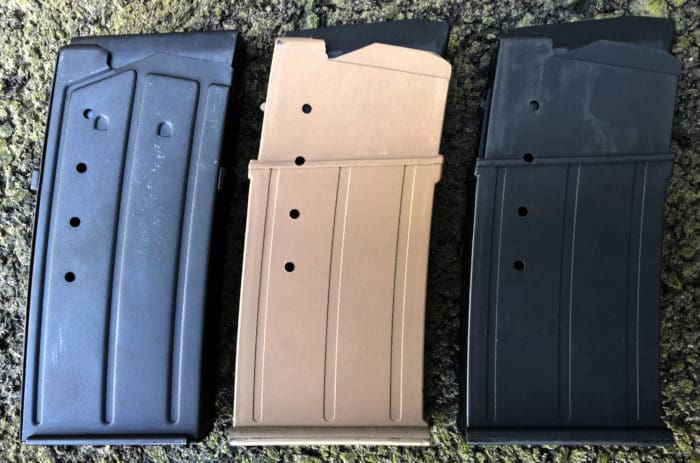

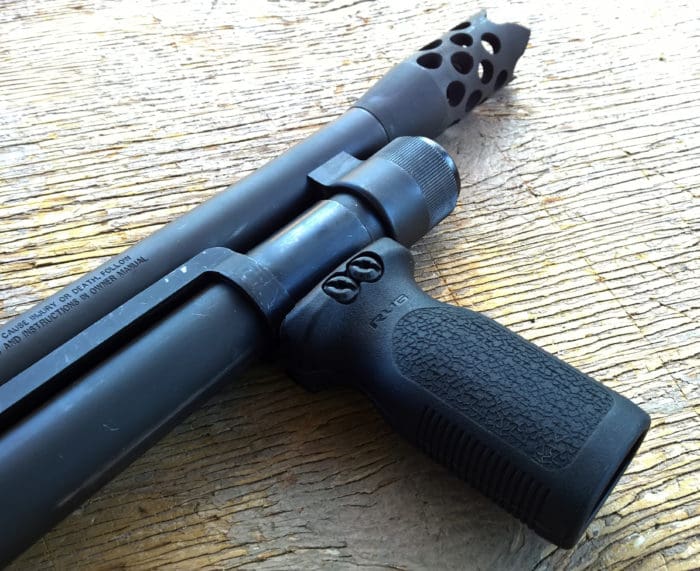


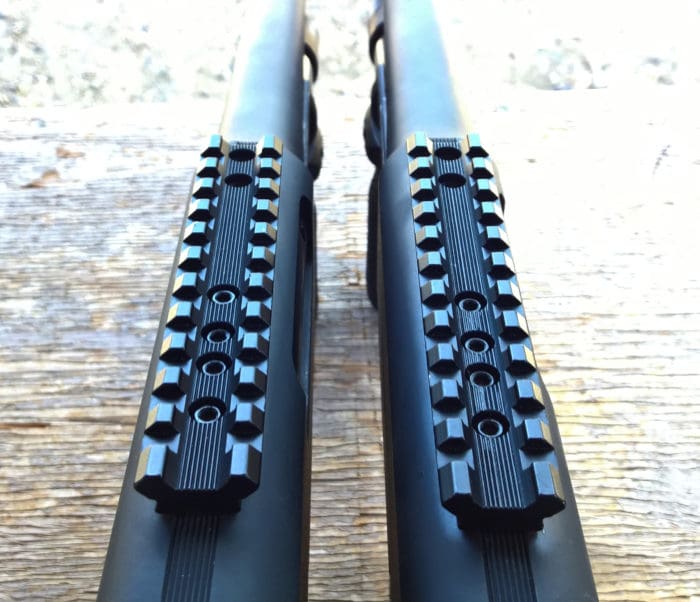
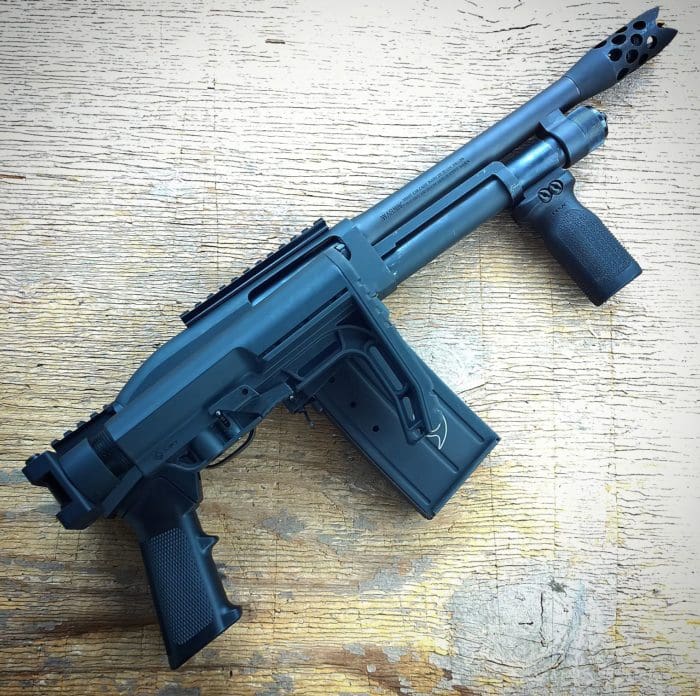
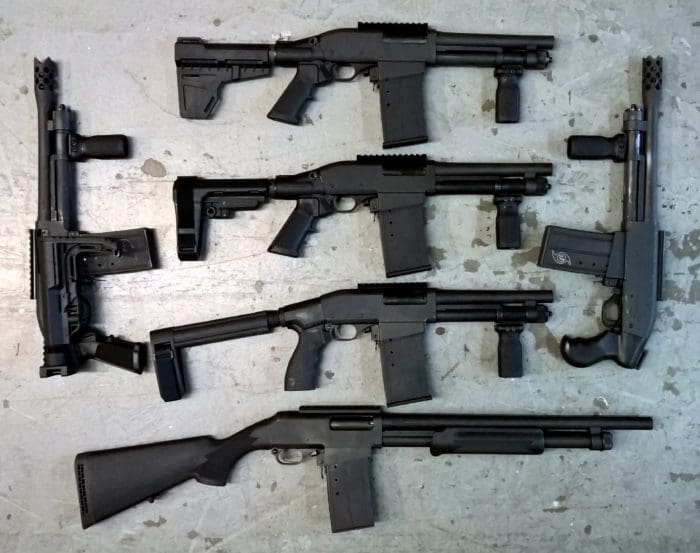

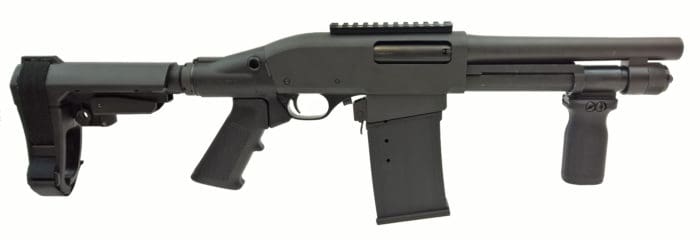
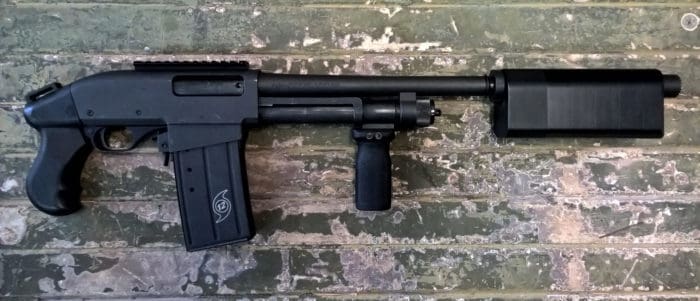


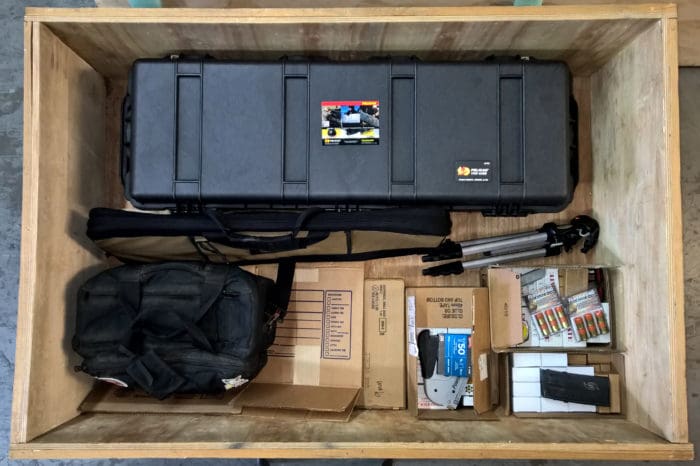


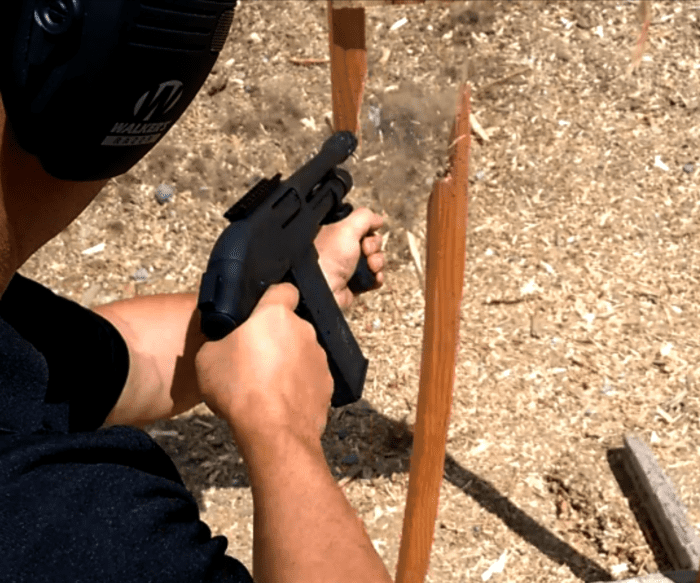

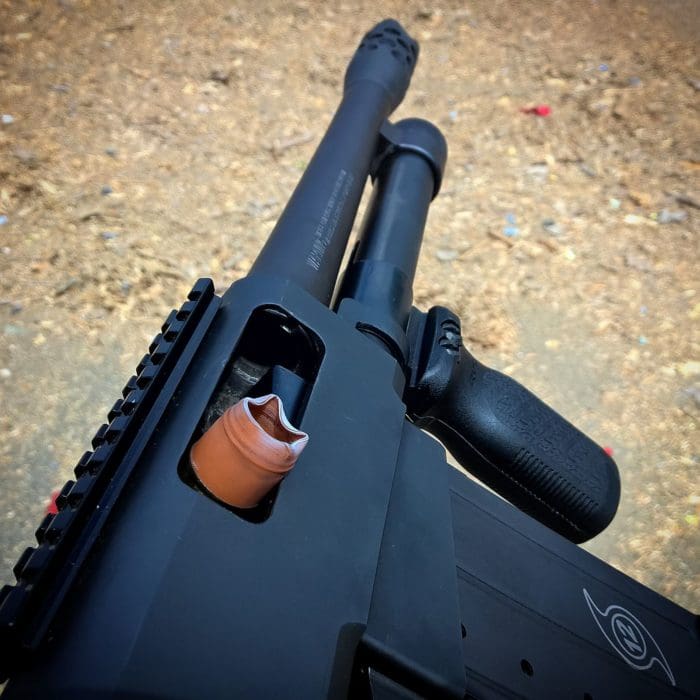
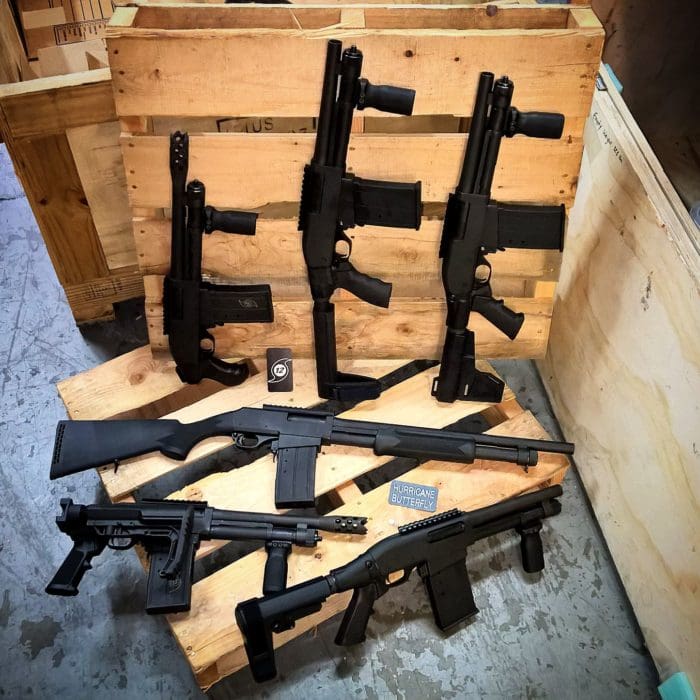



The Thundercougarfalconbird comes with one of these in the glove box.
One word: Thundercougarfalconbird.
$600? That’s going to sell well.
It’s pretty reasonable… about what a Mossie Compact Cruiser goes for.
It does seem fairly reasonable. Then, on the other hand, mechanically, it sounds like an NEF Pardner Pump (that sell for under $200).
Still, pretty cool. I’d like one.
dann
So made in China and has limited availability and costs $600.00 or Mossberg Shockwave, made in USA, can be found everywhere, costs $600.00. Bonus, Shockwave mag fed holds 10 vs 5 rounds. I’ll take the Mossy.
Why don’t they just make those as a P.G.O. firearm and skip the NFA rigmarole? Unless I’m mistake the overall length requirement for a piston grip only firearm is 21 inches as is. Add another 1/4th of an inch for legal comfort and go from there.
26″ or above is considered “not concealable” and makes a traditional, obviously-a-firearm into a title 1 instead of being a title 2 AOW, usually. BATFE’s discretion…
Cool stuff. That’s a lot of firepower in a small package.
I’m liking it!
A pump with a box magazine is retarded.
https://imgur.com/GGwqNPJ
I own one of these and can tell you they helluva alot of fun. I have the SB firearm version and will be changing to the SB3 adjustable brace in the future. (Cuz it looks cooler) buckshot isn’t all that bad and the fireball is crazy.
If you love to wear vests? so get this amazing Red Puffer Vest which is a favorite of all girls and it is the most-rated and most selling outfit in our store, shop now because the stock is limited.